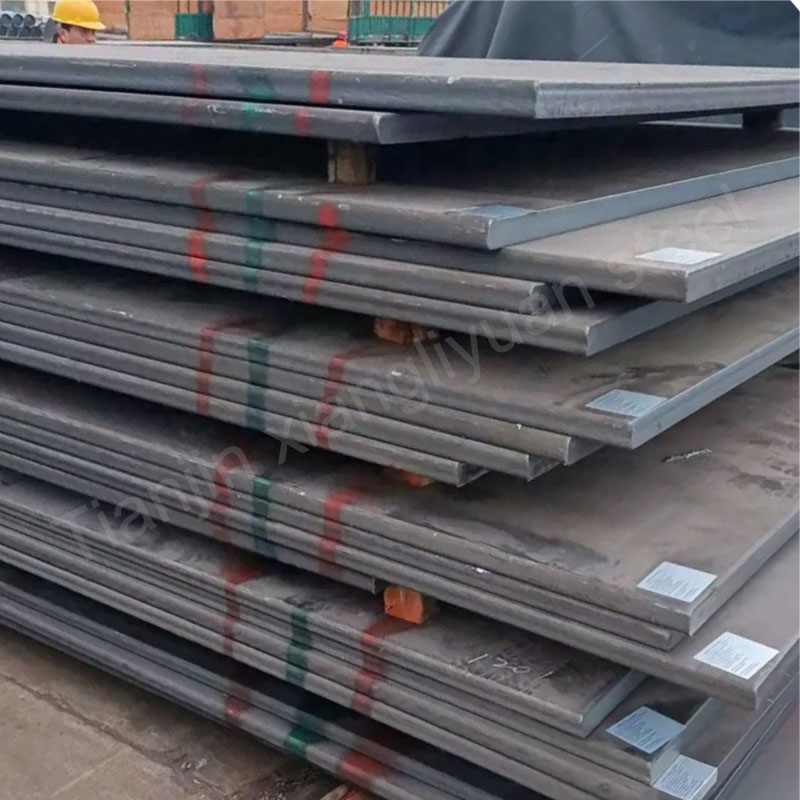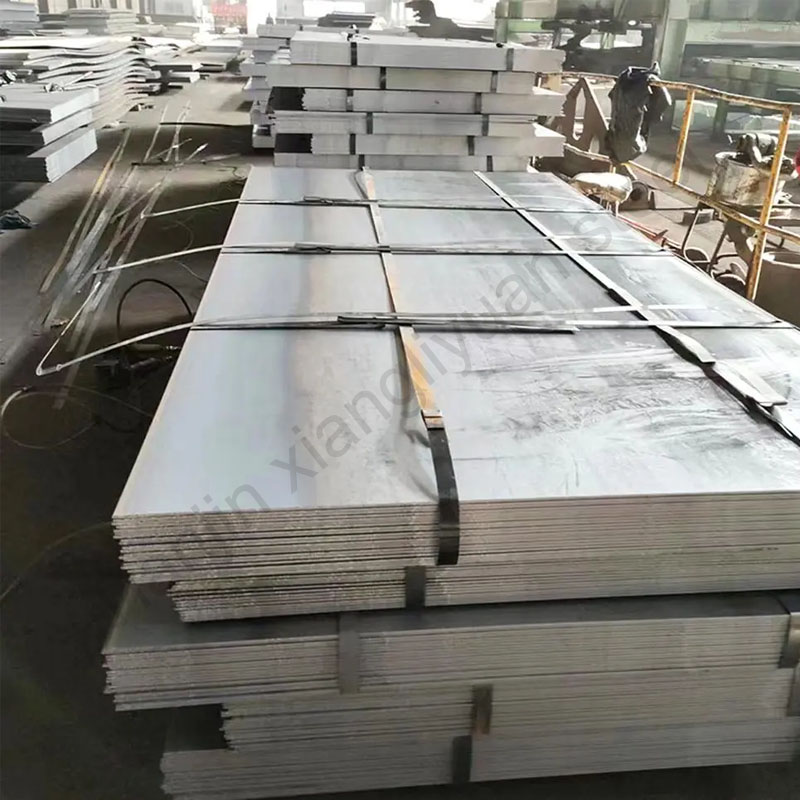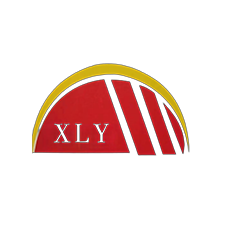Wear-resistant carbon steel plate is a carbon steel plate with high hardness and excellent wear resistance. It improves the hardness and wear resistance of steel by adding different alloy elements (such as chromium, nickel, manganese, boron, etc.) and through special heat treatment process, thereby extending the service life of equipment in harsh working environment.
The material of wear-resistant carbon steel plate is mainly enhanced by adding appropriate amount of alloy elements on the basis of carbon steel to enhance its wear resistance. Common added elements include:
Chromium (Cr): improve hardness and wear resistance.
Manganese (Mn): improve the toughness and hardness of steel.
Boron (B): enhance hardenability and hardness.
Molybdenum (Mo): improve high temperature strength and wear resistance.
Features
High hardness: Wear-resistant carbon steel plate usually has a higher hardness value (HB300~550), which can effectively resist wear.
Excellent wear resistance: Due to its high surface hardness, wear-resistant carbon steel plate has a long service life in a wear environment.
Good toughness: Despite its high hardness, the specially treated wear-resistant carbon steel plate still maintains a certain toughness and can withstand a certain impact force.
Machinability: Wear-resistant carbon steel plates can be processed by cutting, welding, bending and other processing techniques to meet various manufacturing needs.
Common wear-resistant carbon steel plate grades include:
NM360, NM400, NM450, NM500: These steel grades of wear-resistant carbon steel plates are more common in the Chinese market.
AR400, AR450, AR500: These steel grades of wear-resistant carbon steel plates are more common in the international market.
The production and performance of wear-resistant carbon steel plates are usually based on the following standards:
Chinese standard: GB/T 24186
American standard: ASTM A514/A514M
Wear-resistant steel plates can be classified according to their manufacturing methods and applications:
Overlay wear-resistant steel plates: A high-hardness wear-resistant layer is formed on the surface of ordinary steel plates through overlay welding.
Composite wear-resistant steel plates: Made of a wear-resistant layer and a tough substrate through metallurgical bonding or mechanical bonding.
Alloy wear-resistant steel plates: The wear resistance of steel is improved by adding wear-resistant alloy elements to the steel.
Wear-resistant steel plates are widely used in mechanical equipment and engineering that require high wear resistance, including but not limited to the following fields:
Mining machinery: such as excavator buckets, mine car bottom plates, conveyors, etc.
Engineering machinery: such as bulldozer blades, loader buckets, concrete mixer liners, etc.
Metallurgical machinery: such as ore crusher liners, ball mill liners, etc.
Construction machinery: such as cement mills, gyratory crusher liners, etc.
Port machinery: such as conveyor belts, transfer devices, etc.
Power equipment: such as coal pulverizers, coal mill liners, etc.
The high hardness and excellent wear resistance of wear-resistant steel plates have made them widely used in many harsh working environments, extending the service life of equipment and reducing maintenance costs.




